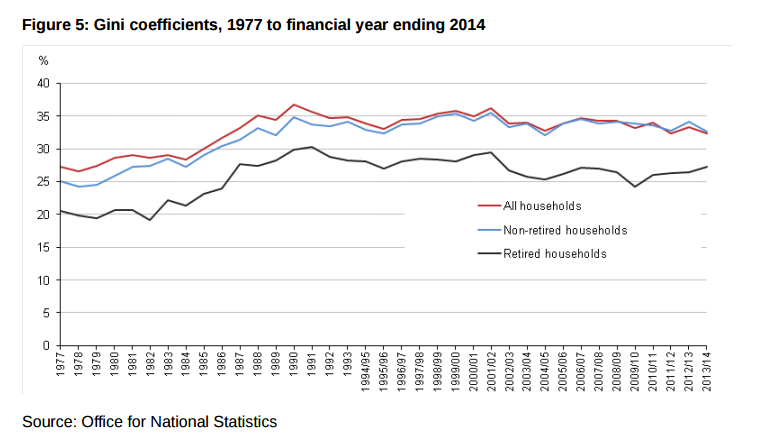Daily catch-up: two new sets of figures suggest the gap between rich and poor is ... unchanged
Service slightly delayed this morning for the 9.30 release of Office for National Statistics data on inequality


Your support helps us to tell the story
From reproductive rights to climate change to Big Tech, The Independent is on the ground when the story is developing. Whether it's investigating the financials of Elon Musk's pro-Trump PAC or producing our latest documentary, 'The A Word', which shines a light on the American women fighting for reproductive rights, we know how important it is to parse out the facts from the messaging.
At such a critical moment in US history, we need reporters on the ground. Your donation allows us to keep sending journalists to speak to both sides of the story.
The Independent is trusted by Americans across the entire political spectrum. And unlike many other quality news outlets, we choose not to lock Americans out of our reporting and analysis with paywalls. We believe quality journalism should be available to everyone, paid for by those who can afford it.
Your support makes all the difference.1. The latest figures from the independent Office for National Statistics suggest no change in the inequality of income after taxes and benefits. The graph above shows the Gini coefficient – the higher the number the more unequal the distribution – from 1977 to 2014.
As you can see, incomes became more unequal in the 1980s, but the trend has been flat since then, with a slight shift towards greater equality recently. These figures support last week’s from the Department of Work and Pensions, which failed to show the expected increase in child poverty, about which I wrote in The Independent on Sunday yesterday.
This is not to say that the level of inequality in Britain today is acceptable, or that 3.7m children living in relative poverty is good. But let the discussion start with the facts rather than the myth.
2. Lawrence Freedman once had an all-purpose article. Expect to see variations of it about the Greek crisis. It begins: “In retrospect it was inevitable... ” And ends: “Things will never be the same again.”
3. Guy Keleny’s Errors & Omissions column on Saturday was good on the difference between convince and persuade, the meaning of to wax lyrical and Sir Brian Leveson’s title.
4. The Top 10 in The New Review, the Independent on Sunday magazine, was a guest list by Simon Thomas of Oxford Dictionaries: Nouns That Are Always Plural. Several more suggestions could have expanded the list:
(Screaming) abdabs. Alms. Athletics. Dregs. Impedimenta. (High) jinks. Linguistics. Mathematics. Mews. Odds. Paraphernalia. Physics. Police. Proceedings. Reparations. Riches. Shambles. Spondulicks.
Thanks to: John Peters, Allan Draycott, Roger White, Adam Huntley, David Crawford, Jonathan Wadman and Ross Allen.
5. Chart of voter flows between 2010 and 2015 elections from Electoral Calculus:

6. And finally, thanks to Moose Allain for this:
“Is it Béyonce or Beyoncé? I can’t quite place her accent.”
Join our commenting forum
Join thought-provoking conversations, follow other Independent readers and see their replies
Comments